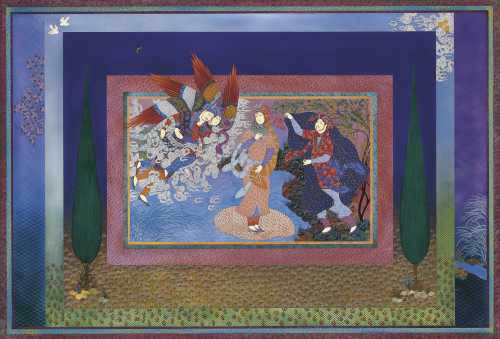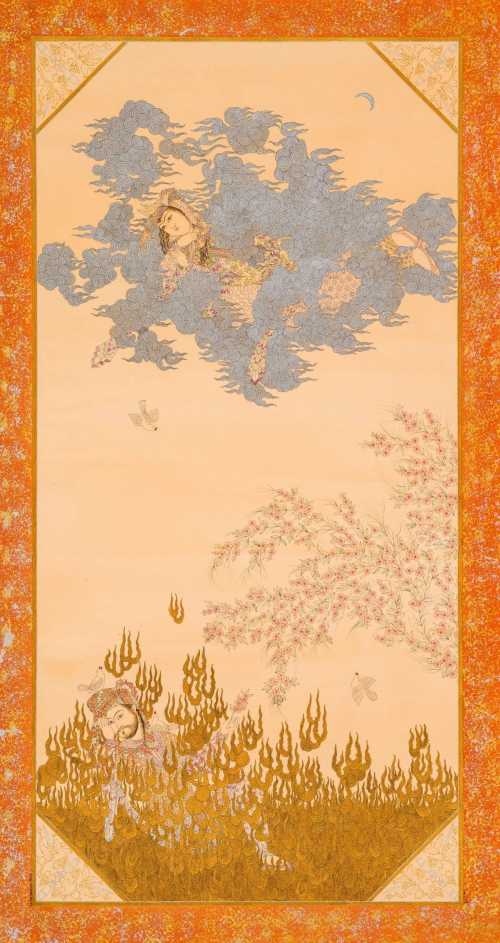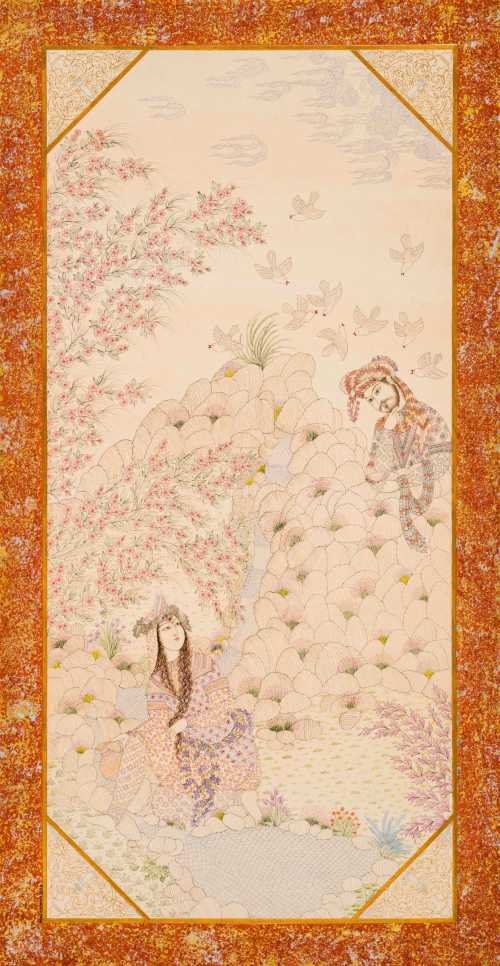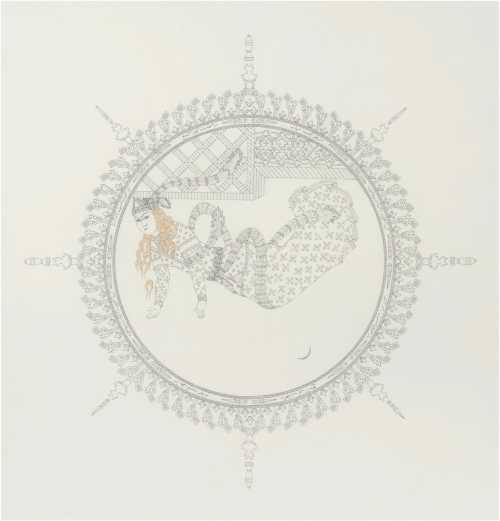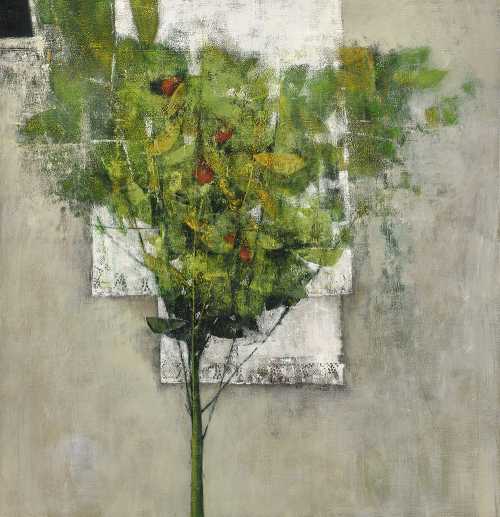- Birth of Venus 2007
- Gouache with gold on card
- Painting
- 110 * 75 cm
- signed and dated 'Farah Ossouli 2007' (lower left) and signed and dated in Farsi (lower right)
Auction Histories
Sell at
-
Auction House
4 November 2011
Realized Price
Artwork Description
Sandro Botticelli's Birth of Venus expresses great hopes of the Renaissance period for the rebirth of humanity. Inspired by Botecelli's work and merging it with the traditions of Persian painting, Farah Ossouli depicts a contemporary Iranian Venus. In Ossouli's painting Venus is fully dressed and covering part of her body with a scarf is standing on a shell. Further details thare are changed in Ossouli's version include the man shown spreading a blanket patterned with stars over Venus, thus symbolizing darkness, concealment and infinity.
Dense iconography populates the painting, with geometric divisions of the illustrating the perpetual sequence of day and night as well as the continuity of life in various layers of time and space. Cypresses represent youthful pride; buds symbolize spring and rejuvenation. The moon illuminates the sky and the river denotes the passing life. The sun appears from behind the clouds and birds are on the wing in the upper part of the painting, as according to Graeco-Roman mythology, Venus will eventually fly to the skies along with the birds.
Dense iconography populates the painting, with geometric divisions of the illustrating the perpetual sequence of day and night as well as the continuity of life in various layers of time and space. Cypresses represent youthful pride; buds symbolize spring and rejuvenation. The moon illuminates the sky and the river denotes the passing life. The sun appears from behind the clouds and birds are on the wing in the upper part of the painting, as according to Graeco-Roman mythology, Venus will eventually fly to the skies along with the birds.
Realized Price
26,219 USD
Min Estimate
13,797 USD
Max Estimate
19,547 USD
Average Artwork Worth
+77.703%
Average Growth of Artwork Worth
Sales Performance Against Estimates
Average & Median Sold Lot Value
2021 - 2025
Performance vs. Estimate
2021 - 2025
Sell-through Rate
2021 - 2025
Similar Artworks
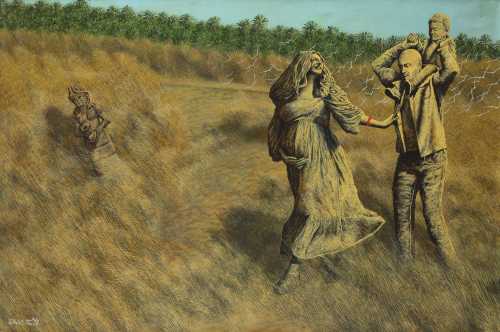
Untitled
Estimation
€5,000
5,882 USD
-
€8,000
9,412 USD
Realized Price
€4,500
5,294 USD
30.769%
Sell at
Sale Date
Millon & Associés
-
15 December 2025
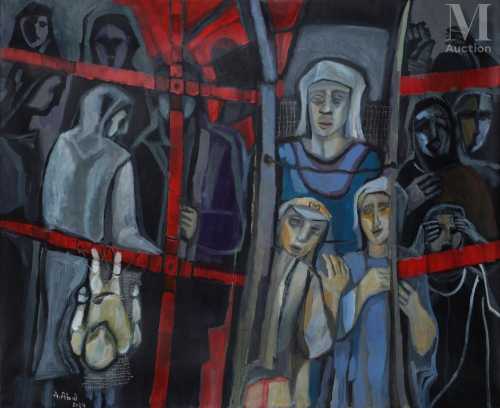
In the shadow of the agression
Estimation
€5,000
5,214 USD
-
€8,000
8,342 USD
Realized Price
€5,000
5,214 USD
23.077%
Sell at
Sale Date
Millon & Associés
-
19 December 2024
